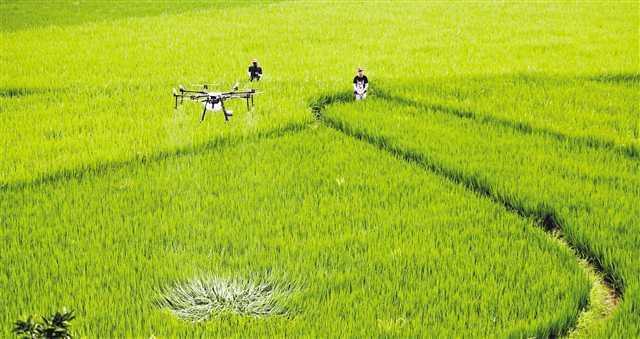On May 19, in the rice field of Wang Maoqing, a large farmer in Lianghu Village, Xiaoshi Town, Huaining County, the UAV was spraying pesticides on the rice under the operation of the robot operator. The foggy pesticides were scattered in the rice field with the airflow, and the dispensing staff were dispensing on the open land 50 meters away from the rice field. Soon, the UAV was moving around, and a large area of green rice was sprayed.
“Now all of our major grain growers use drones to spray pesticides, which greatly improves the efficiency. I don’t need people to go to the fields. I have contracted 500 mu of good farmland to plant rice. If I have to carry a spray on my back, it will take me at least half a month to hit it, which will greatly increase the cost and may also delay the farming season,” said Wang Maoqing, a major grain grower.
Compared to the traditional manual pesticide spraying mode, drone spraying has the advantages of fast speed and high efficiency, which not only greatly reduces labor costs but also improves pesticide utilization rate. At the same time, the downward airflow generated during the flight can blow rice seedlings, making them more evenly sprayed with pesticides, ensuring high yields and harvests of crops.
In recent years, small towns have continued to promote the construction of high standard farmland, using technological planting methods such as mechanical sowing, drone pest control, and mechanized harvesting to promote intelligent agricultural production, making agriculture easier, laying a solid foundation for the transition from traditional agriculture to modern agriculture, and empowering rural revitalization.


No reply content